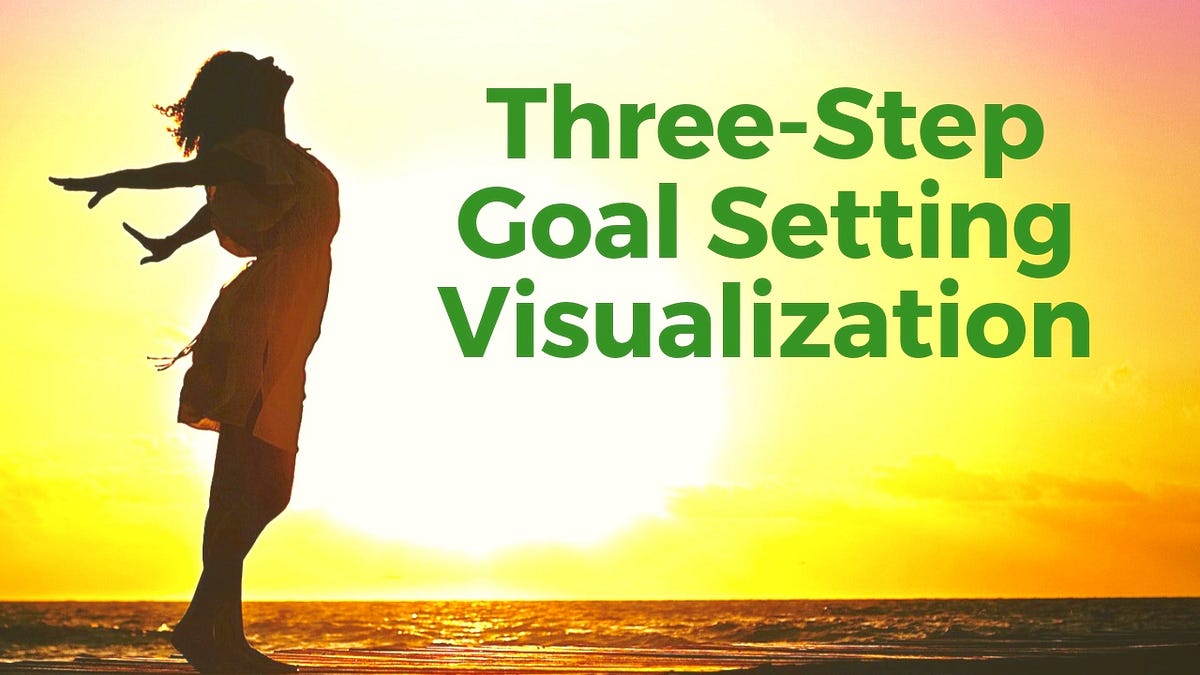Visualization is something that can be somewhat controversial. Visualizing goals is one of the most common tips alongside ‘living your dreams’ but just like that statement, it’s a little over simplified. Because according to research, visualization can actually reduce your likelihood of success in some instances. The reason for this is that when we visualize a goal, it can actually be demotivating.
This makes us feel as though we have already accomplished whatever it is we’re setting out to achieve and it allows us to rest on our laurels that much more. At the same time, visualizing can often be too abstract, too vague and too flaky to be of any real use. People who daydream about doing what they want – according to the science – often don’t actually make those goals a reality.
But that’s not to say that visualization is useless. It’s just a matter of understanding how to use it as a tool and how to not allow it to take over.
What is Visualization? And How it Helps With CBT and The Law of Attraction
Perhaps a good way to start would be by looking at precisely what visualization is. We’re going to look at that here, as well as at how visualization can actually be combined with CBT (Cognitive Behavioral Therapy) techniques in order to achieve even more powerful effects.So visualization involves using your mind’s eye to picture the future you want to live.
When you do this, what is actually happening, is that you are causing areas in your brain to fire as though you were really experiencing that thing. When you picture walking through the woods for example, areas relating to movement will fire, as will areas in your visual cortex (V1). Of course they fire less than if that thing were actually happening but on the whole, the experience is very similar.
This therefore means that when you visualize something, your brain effectively thinks that it is already happening. And this is why visualization can be such a potent tool when it comes to confidence, to motivation and to sticking with a goal. CBT is a school of psychology that revolves around attempting to change our thought processes in order to help us accomplish more.
It means looking at limiting beliefs (‘I’ve never been very good’), challenging them with the evidence and then replacing them for more positive statements (‘I have a powerful skillset’). This helps make us more motivated and more likely to achieve our goals.But we can likewise accomplish the same with visualization, only now we’ll be able to visualize specific goals and feel like they’re already happening.
When you visualize being a billionaire, your brain will temporarily feel as though you are a billionaire. And if you believe this, even temporarily, then you’ll find your chances of actually becoming that thing increase thanks to the ‘law of attraction’. The law of attraction states that when we believe ourselves to be a certain way, we tend to become that thing because of the way it changes our presentation and our actions.
When you believe that you’re an incredibly savvy businessman or woman, you start to be more confident in interviews, you take more positive risks in investments and you walk taller.You’ll even dress more professionally and people will sit up and take notice of that – which will ultimately lead to you being more likely to get the promotions and the responsibility you need to thrive.
Visualize. Believe. And make it happen!
More Practical Uses for Visualization
The other practical use of visualization is in creating that mission statement. If you’ve had difficulty identifying the things that make you passionate, then try closing your eyes for a moment and visualizing your perfect future.
Imagine yourself 10-20 years from now. Where do you want to be? Where do you live? What’s your house like? Do you have a family? What is your job?
Some people will picture a quiet little cottage for them and their family. Some people will find themselves relaxing around a fire at Christmas playing boardgames with their children. Others will picture themselves travelling the world. Or they’ll see themselves in a professional looking suite, standing in a high rise building looking over the cityscape below.
Whatever the case, it is easy for most of us to conjure up the possible ideal future that would make us happiest. And it’s from this abstract set of ideas that we can then go about creating more concrete goals and strategies. We can also draw on our memories for this. If you’re struggling to come up with a perfect future, then how about digging into your perfect past? What are your happiest memories? What were your proudest moments? By remembering this, you can identify the things that might make you happiest in future.
Another way to use visualization is in ‘counterfactual simulation’. This means imagining possible futures and thinking about all the things that you can do to make them happen, or avoid them going wrong. This is also a great way to test-run ideas for your future. Thinking about being a rock star? Then take a moment to consider what that would actually mean. Visualize it and go through each step: is it really for you?
You would be in the public eye, you’d be rich, you’d be constantly travelling, it would be harder to have a family, you’d have to perform in front of thousands, people would consider you highly successful.
There’s good and bad there depending on who you are, so actually picture that future, run it through in your mind, think of every contingency and then decide if you still think that it is right for you!
P.S.
Discover more from Personal Blog of Richard Tong
Subscribe to get the latest posts sent to your email.






I used to be recommended this blog by means of my cousin. I am not sure whether this put up is written through him as nobody else realize such distinctive about my trouble. You are incredible! Thank you!
514654 434826Wow What excellent data. Thank you for the time you spent on this post. 472309
The electronic cigarette makes use of a battery and a small heating aspect the vaporize the e-liquid. This vapor can then be inhaled and exhaled2471 URLs
Hey There. I found your blog using msn. This is a very well written article.I’ll be sure to bookmark it and come back to read more of your useful information. Thanksfor the post. I will definitely return.
This will cause you to experience the most traffic to you in the long run.
Fantastic post.Thanks Again. Much obliged.
Wow, great blog post. Much obliged.
I value the article post.Thanks Again. Great.
I really enjoy the blog.Really looking forward to read more. Keep writing.
Thank you ever so for you article. Much obliged.
Major thankies for the article post. Will read on…
I blog often and I really thank you for your information. The articlehas truly peaked my interest. I’m going to bookmark your blog and keep checking for new details aboutonce a week. I opted in for your RSS feed too.